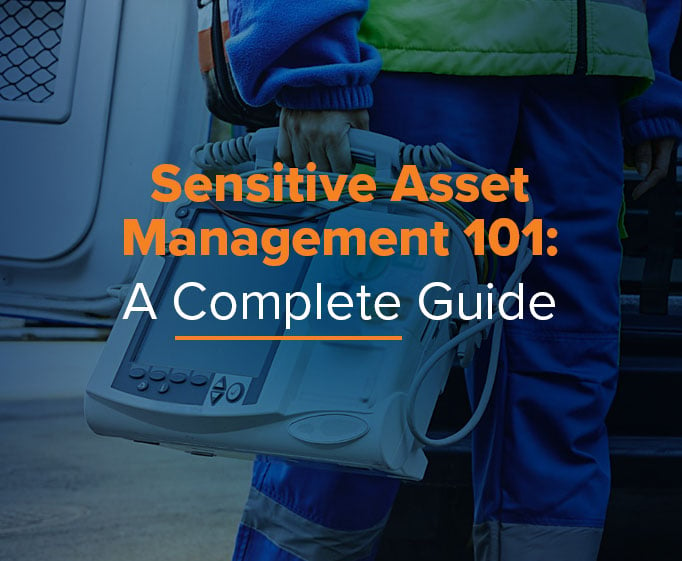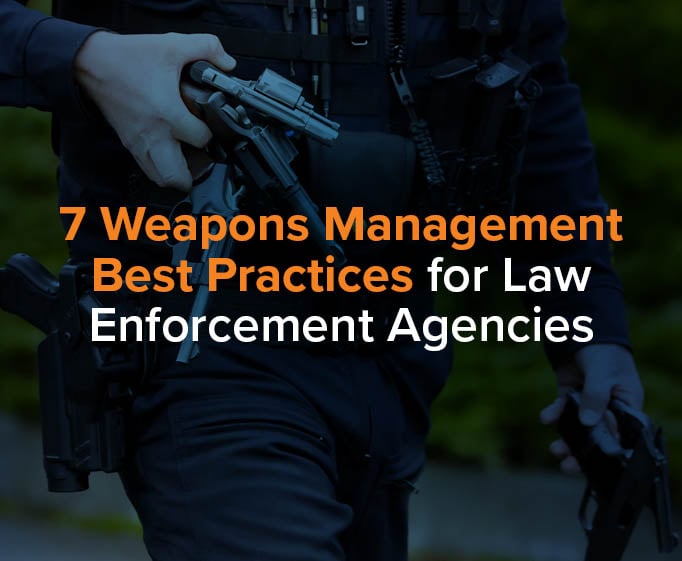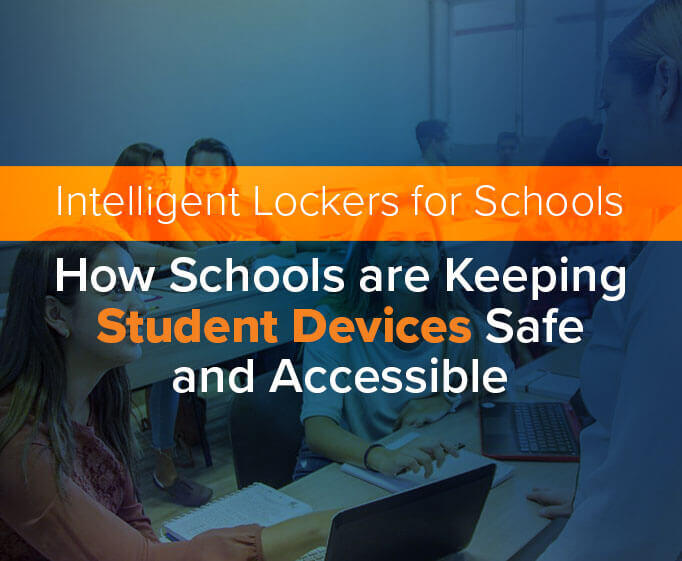By Jay Palter | March 28, 2025
It doesn’t matter whether you’re a small, rural sheriff’s officer or a major metro police department. If you lack strict controls, your agency’s weapons can disappear.
This isn’t a theoretical concern. Unfortunately, weapons loss within law enforcement happens pretty regularly. Human error is far too likely when you rely on manual processes for weapons management. Automating as much of your management, storage, and tracking as possible is a more reliable way to maintain full accountability for your weapons.
- Establish Clear Weapons Management Policies
- Simplify Weapon Loss Reporting Procedures
- Train Officers in Secure Firearms Storage
- Implement a Clear Chain of Custody for Weapons
- Strengthen Access Control with Smart Armory Systems
- Improve Accountability with Automated Weapons Tracking
- Implement an Advanced Weapons Management System
- How Intelligent Lockers Prevent Weapon Loss in Law Enforcement Agencies
This article explores seven ways law enforcement agencies (LEAs) can better manage their weapons. Our focus is on how you can use intelligent weapons management systems. But technology alone is never going to be the answer. You need to embed your automated electronic platform within sound policies and practices.
Establish Clear Weapons Management Policies
Policies are your foundation. Everything else you do regarding weapons management must be built on top of reliable policies. This applies to all essential law enforcement activities but is especially important when it comes to weapons management.
Evaluate Your Weapons Policy Requirements
This may sound obvious, but it’s always important to step back and ensure everyone involved in your policy writing is on the same page about your goals. Your armory manager may assume the goal is to reduce paperwork. Your chief might think you’re planning to reduce your procurement budget. Your sergeants might think you’re trying to hold officers accountable. Are you trying to do all of those things or just some? Step back and get on the same page first.

Draft Comprehensive Weapons Management Guidelines
Generally, policies should guide, not rigidly dictate. They set the boundaries. While we can expect guidance on weapons management to be more rigid than other activities, there will always need to be exceptions. Draft your policy with that expectation in mind. Many different elements might be necessary based on your requirements, but these are essential components every organization policy typically needs:
- Purpose: Your policy's intent and desired outcome.
- Specifications: Note specific regulations and standards related to weapons management. For example, if your LEA participates in the ATF’s Federal Firearms Licensee (FFL) program.
- Implementation: Define every relevant role, responsibility, and enforcement method.
- Effective Date: Always state when the policy takes effect. This is important because many instances of weapons loss are only discovered well after the fact. Everyone needs to be on the same page about what expectations were in effect at the time of the loss.
- Glossary: Define key terms. Again, you’re getting everyone on the same page.
Get Input from Armory Stakeholders
Those people we listed earlier? Armory management, police chiefs, and sergeants? Those are your stakeholders. In addition to providing up front input, you should allow them time to review your policy drafts before they go live. You may be the individual within your LEA ultimately responsible for weapons loss, but the use of force impacts most units within your agency. Their representatives should be allowed to help shape policy.

Communicate Weapons Policies to Officers and Staff
While you won’t include every frontline officer and employee in policymaking, you must still communicate the new policy rollout to secure buy-in. That includes providing them context for why the policy is going into effect. How it protects them, and what their responsibilities are. Then, make your weapons loss and management policy easily accessible in the employee handbook or agency’s local network.

Regularly Review and Update Armory Management Policies
Policies should be living documents, as your needs will inevitably change over time. The mix of firearms and less lethal weapons you deploy may change and, therefore, change the risks you face from weapons loss. That might require an update.
Government regulations can change suddenly. So can social expectations around police work. Be prepared to review your weapons policies regularly—at least annually—to ensure ongoing compliance with state and federal laws, regulations, and your LEA's needs.


Streamline Your Armory Operations with Intelligent Weapons Management
Discover how intelligent storage and tracking systems improve accountability, simplify workflows, and safeguard your law enforcement weapons.
Simplify Weapon Loss Reporting Procedures
Put some thought into how your personnel can report a loss and what happens after they do. Reporting weapons loss needs to be a simple process. And while you must demand accountability from your officers and personnel, you don’t want the consequence of a loss to be so severe that it encourages them to hide the loss.
Assign clear, accessible reporting channels, too. You don’t want an initial report of a loss to require a large amount of paperwork. That may need to come later for documentation and reporting, but a quick phone call or even a text might be all you need to trigger your action plan.
Train Officers in Secure Firearms Storage
Comprehensive training is essential for all personnel who handle agency firearms, including Storage. It is never simple when it comes to firearms. Your sworn officers, armory staff, and other personnel working with firearms all need to be trained in your essential storage procedures. That might involve a required checklist they need to follow or the proper use of an intelligent firearms locker system that manages the checklist for them. This training should emphasize secure storage practices when firearms are not in immediate use.
People, even law enforcement professionals, will inevitably fall back on bad habits without proper training. All too often, that means firearms are improperly stored in glove compartments, vehicle consoles, or backpacks left in plain sight, or even public restrooms.
Supply your personnel with easily accessible storage options. These should effectively secure weapons of all sizes and types, ideally along with ammunition and accessories in the same system. If possible, build in notification systems so you can receive alerts if weapons are not returned on time or components are missing. An asset surveillance system built into intelligent lockers can assist with this.
Implement a Clear Chain of Custody for Weapons
When weapons change hands, the risk of loss jumps. Much like you need a chain of custody on evidence, you should try to establish a clear chain of custody around weapons. Set procedures that minimize the times weapons are not under someone’s supervision. You want to know who has which weapons at all times.
Here, intelligent locker systems can also help. You can build in weapon curfews. For example, 15 minutes after the end of a shift, if an officer hasn’t returned all of their police gear, weapons, and accessories, your sergeant or armory manager can receive an automatic notification.
They can immediately call the officer and double-check whether they left their weapon in the squad car's trunk or personnel locker or accidentally took it home. The system handles the chain of custody monitoring for you so you don’t have to constantly check in on potential problems.
Strengthen Access Control with Smart Armory Systems
Apply a level of access control commensurate with the risks you face from weapons loss. You can use lower security PIN codes in some jurisdictions. Elsewhere, you may want to use your existing ID badge system or even biometrics for high-risk situations, like tactical kits.
Electronically managing these access controls produces more consistent processes that minimize potential mistakes. They also offer the flexibility to tailor sign-in/out checklists to your needs tied to authentications.
For example, you could require officers to report the use of firearms or LLWs upon return, triggering an alert for their sergeant to expect use-of-force paperwork or just to check in.
Beyond the security benefits, automating your access controls with a smart locker will significantly improve operational efficiency. Weapon retrievals take seconds, and emergency overrides ensure officers can retrieve specialized weapons for emergencies even when the armory manager or their superior officer is off duty.
Improve Accountability with Automated Weapons Tracking
Manual weapons management is inherently vulnerable to human error. Officers, like everyone, experience fatigue and illness and require time off. So, tying your critical weapons loss prevention tasks to an individual staff member’s presence creates unnecessary risk.
Intelligent locker transaction logging provides real-time, airtight tracking of all your weapons and other police gear. You will receive instant alerts for irregular signout activity, failed authorization attempts, overdue weapons returns, or any other condition you want to set. The real power of these smart lockers is their ability to manage not just weapons but the law enforcement activities in which they’re used. You’ll be able to keep your officers and personnel accountable.
Implement an Advanced Weapons Management System
Transitioning from a manual weapons tracking system to using intelligent lockers for weapons management will significantly reduce the risk of losing weapons. These systems can track one or more weapons per compartment.
You can apply RFID tags to weapons so they don’t impact use. These will allow the asset surveillance technology within lockers to identify individual weapons when an officer signs them in or out. The system will verify the ‘identity’ of each weapon to confirm the officer returned the correct one and all associated accessories.
How Intelligent Lockers Prevent Weapon Loss in Law Enforcement Agencies
Intelligent locker systems are a reliable solution for law enforcement agencies requiring high-security weapon storage and tracking. They enhance security, increase staff accountability, and provide a cost-effective way to manage weapon inventories, regardless of the volume or types of weapons in your armory.
Ready to Modernize Your Law Enforcement Armory?
Implement advanced armory management solutions and enhance security, efficiency, and compliance across your agency.
Subscribe to our blog

Jay Palter
Vice President of Marketing & Partnerships




